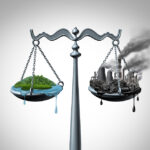Emerging risks evolve through three phases: emerging interest, emerging damage and emerging litigation.
Executive Summary
Out of hundreds of risks being investigated by scientists, most are likely to be safe and few will ever see litigation. That means that reacting to these risks at an early "emerging interest" stage by taking underwriting actions has a big downside, Praedicat executives advise. Here, they also describe the too-late "emerging litigation" stage and the just-right "emerging damages" stage, highlighting one particular chemical compound in that middle stage—melamine—explaining that carriers now have an opportunity to take actions to manage and price the risk while still writing it.During the “emerging interest” phase, scientists, regulators or legal scholars first flag the potential for the risk to harm humans or the environment and publish their findings. In some cases, these initial studies seed larger scientific literatures that investigate the harms in depth and examine the pathways of exposure, causing the risk to enter the “emerging damage” phase.
The progression to this “emerging damage” phase is an indicator of elevated litigation risk. The scientific work done during this phase implicitly contains the blueprints for any future litigation but also inevitably reveals the gaps that must be filled before litigation can begin. Since these gaps depend on scientific findings that emerge only infrequently, emerging damage risks are unlikely to graduate to the third phase. However, in a small number of cases, the scientific and regulatory literature closes the gap, and the “emerging litigation” phase begins.


































